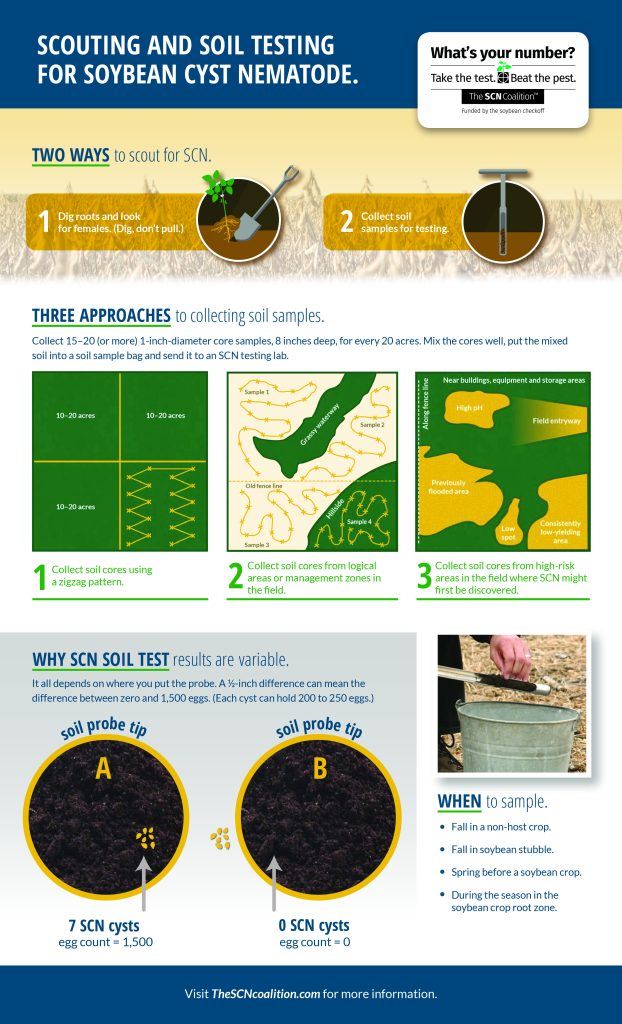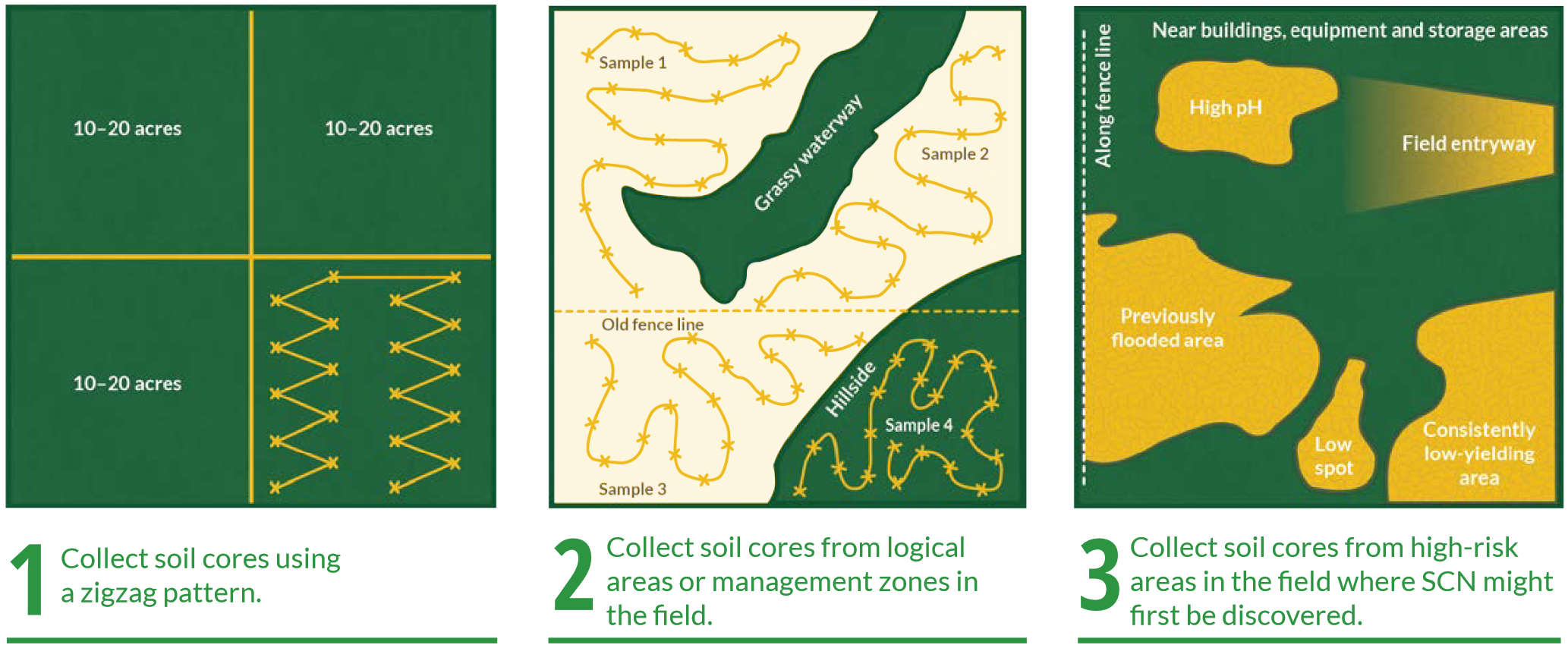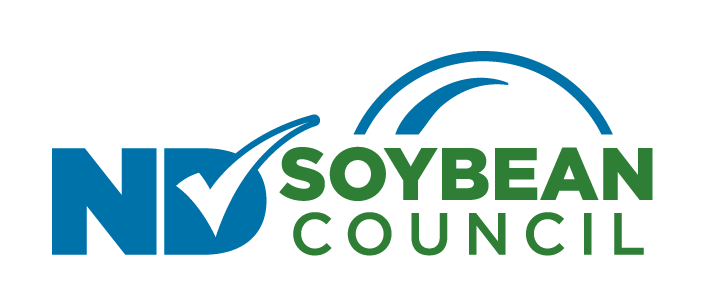SCN Sampling Program
In an effort to help North Dakota soybean producers better manage SCN, the North Dakota Soybean Council, in partnership with the NDSU Extension, is ensuring that growers have access to free SCN sampling bags this fall.
The North Dakota Soybean Council provides financial support for the SCN sampling program by covering the cost of the laboratory fees when growers use pre-marked SCN sampling bags. Up to 2000 SCN sampling bags are available for North Dakota growers for SCN sampling this fall; the NDSU will label, code, and distribute the SCN sampling bags to growers and agronomists.
The SCN sampling program supports growers by helping them identify the presence and pressure of SCN on their farms. Results of this sampling program will contribute to the Annual SCN Survey to guide statewide proactive management decisions.
For more information about SCN sampling program, contact Wade Webster at NDSU at richard.webster@ndsu.edu or by phone at (701) 231-7057.
How to Sample for Soybean Cyst Nematode (SCN)
How to Request SCN sampling bag:
- Contact the County Extension Office in mid-late August
- Each North Dakota grower can get up to three SCN sampling bags
- Agronomists who would like to have a bundle of soil testing bags on-hand for clients, should contact the North Dakota Soybean Council.
Why Sampling for SCN is critical:
- The most reliable way to identify SCN
- The only way to determine your egg number (and risk)
- The best way to determine if your management tools are working
What am I sampling for? SCN is a parasitic nematode that will complete two to three life cycles each growing season. Each female will produce 100-200 eggs, which are protected within her body wall after she dies (called a ‘cyst’). When we soil sample, we are measuring the amount off eggs in the soil, which are measure in 100cc (which is approximately 3.4 ounces).
When to sample? The best time to sample is at the end of the growing season; before or after harvest (September/October). This can be done before or after harvest, and will coincide with the highest egg levels in the soil.
How do I sample? Aim for the roots, sample right next to the plant! You only need to go 6-8 inches deep. Take 10-20 small samples, mix up, and fill soil bag with the composite sample.

What sampling strategy do I use? There are several strategies, depending on the mission. For those who know they have SCN, you can determine how well their management tools are working by evaluating egg levels in the soil. The best strategy to do this is to take soil cores from similar areas in a field and group the samples (strategy 1 and 2 on Figure 1). For those who are sampling to determine if they have SCN at all, it is best strategy is to focus on areas when SCN is most likely to be introduced into a field, such as field entrances, shelter belts, and frequently flooded areas (strategy 3 on figure 1).
Where to sample? SCN moves with anything that moves soil, loves high pH, and often doesn’t show above ground symptoms. Consequently:
Focus on areas that are likely to introduce soil to your field, such as:
- Field entrances (SCN being moved on equipment with soil)
- Low spots where water pools (SCN moving in water)
- Frequently flooded areas (SCN moving in water)
- Along shelter belts or fence lines (SCN moving with wind-dispersed soil)
Additionally, several areas should be considered suspicious for SCN, and can be sampled.
- High pH spots in the field (SCN loves high pH).
- Areas with unexplained low yields (do the beans look fine but yield poorly in a spot?).
- Areas that turned yellow in August (heavy SCN damage may show up as stunted or yellow beans when it is hot and dry late in the season).

Three approaches to collecting SCN soil samples 1.) collect soil cores using a zig-zag pattern; 2.) collect soil cores from logical areas of management zones in the field; and 3.) collect soil cores from high-risk areas in the field where SCN might first be discovered. (www.thescncoalition.com)
How do I interpret the results? Results come back measured in eggs per hundred cc of soil (eggs/100cc). A 100cc is about 3.4 ounces. During the process, samples are diluted and measured in multiples of 50. If the samples are 0, no eggs were found. Sample 50-200 are very lo levels and should be viewed as suspicious (but not necessarily confirmed). There are other nematodes laying eggs in the soil, and these are often indistinguishable from SCN. Anything higher than that should be viewed as a positive, and, it should be managed. SCN can explode very quickly, so a find of 1,000 eggs/100 cc should be aggressively managed, so it doesn’t become 10 or 50 times higher after the next planting of soybeans.
For More Information – Contact Dr. Richard (Wade) Webster, NDSU’s Soybean Pathology Specialists at richard.webster@ndsu.edu or 701-231-7057.
For SCN management practices and additional information, please visit Soybean Cyst Nematode | NDSU Agriculture; Summary of Soybean Cyst Nematode Survey: 2013-2021 (05/19/22) | NDSU Agriculture
For more information visit www.thescncoalition.com.
Check out the SCN Profit Checker here: Check Impact of SCN on Your Soybean Profits | The SCN Coalition


